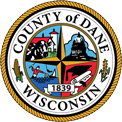Public Input Sought on Yahara Lakes Cleanup Ideas - Thursday April 29 at 7 p.m.
April 27, 2010
Sue Jones (608-224-3764
Melissa Malott (608-220-0167)
Josh Wescott (608-267-8823)
Land & Water Resources
Yahara CLEAN Meeting to be held Thursday April 29 at 7 p.m.
The Dane County Lakes and Watershed Commission and the Yahara Lakes Legacy Partnership (YLLP) will host a public informational meeting on Thursday April 29, from 7 – 9 p.m. at the Exhibition Hall of the Alliant Energy Center -- Kegonsa Room. The Alliant Energy Center is located at 1919 Alliant Energy Center Way in Madison (www.alliantenergycenter.com/Directions/LocationMaps/tabid/73/Default.aspx ). Parking is free for this event.
Dane County Executive Kathleen Falk said, "From construction of a first-of-its-kind facility to keep phosphorus from cow manure out of our lakes to some of the most effective clean water regulations in the country, we've made great progress improving the lakes we love," County Executive Kathleen Falk said. "There's always more to do and we want to hear the wonderful ideas from our citizens Thursday night."
The meeting will begin with a 30 minute presentation about the status of work over the last two years, guided by the Yahara CLEAN (Capital Lakes Environmental Assessment and Needs) Memorandum of Understanding (MOU), to assess and model Yahara watershed nutrient and sediment runoff and beach bacteria; and to develop recommendations for watershed improvement that build on past work. After the presentation, briefing organizers have set aside 90 minutes for public questions, comments, and area resident input on recommendations for improving the health of the lakes.
Melissa Malott, Chair of the Dane County Lakes and Watershed Commission, said "The Lakes and Watershed Commission has closely tracked the assessment and modeling work of Yahara CLEAN, and is interested in hearing public comments on ways to control urban and agricultural runoff to clean up the Yahara lakes."
This is part of the public outreach and input meetings hosted by the Lakes and Watershed Commission and YLLP, leading to the completion of Yahara CLEAN recommendations by June 30, 2010.
"We are reaching out to the lake users, residents and people who use our lakes to look at various solutions to clean up our lakes and make our beaches safer for swimming," said Supervisor Brett Hulsey, chair of the Lakes and Watershed Commission’s Yahara CLEAN subcommittee.
Background
The Yahara River’s chain of five beautiful lakes defines our region and is integral to everything we are and do. The quality of these lakes deteriorated significantly over time as our population and use increased. Many public and private organizations have dedicated time and resources over decades and have solved many Yahara Lakes problems, yet new challenges have emerged. Our community is at a critical moment in the health of the lakes.
YLLP was created to coordinate, support, and provide for communication among separate public and private initiatives that emerged independently in the fall of 2007, each responding to identified needs for visioning and planning for the Yahara lakes. One main goal of the partnership is to support the Yahara CLEAN MOU signed in early 2008 by Dane County, the Wisconsin Department of Natural Resources, Wisconsin Department of Agriculture, Trade and Consumer Protection, and the City of Madison. The partnership’s other main goal is to formulate a plan for continued, long-term, broader partnerships aimed at protecting and enhancing Yahara lakes and watersheds.
The Yahara CLEAN MOU stipulates specific goals for identification of major sources of sediments, nutrients, and beach bacteria and of solutions to remediating those sources. The YLLP Coordinating Committee and several technical committees have assessed and modeled Yahara watershed conditions, and are now developing a final Yahara CLEAN report, including recommendations for priority actions, benefits, and associated costs.
Recommendations for reducing sediment and nutrients will likely include a focus on manure management, changes to crop rotations, urban erosion control and stormwater management, and sediment and nutrient removal through in-channel dredging. Watershed-wide modeling that has been completed enables the partners to focus on recommending practices in subwatersheds with the highest levels of existing phosphorus and sediment runoff.
With respect to reducing beach bacteria, YLLP is focusing first on developing beach clean-up plans to improve conditions at two of six City of Madison beaches listed as “impaired” by the U.S. EPA under the Clean Water Act. Recommended practices are likely to include stormwater management measures and goose control. Clean up plans for the other four beaches will follow.
Implementation of the recommendations of the Yahara CLEAN report will begin in 2010. YLLP also anticipates continued development of a more comprehensive long-term plan for protecting and improving the Yahara lakes through a partnership of engaged stakeholders.
To keep up to date on this work, visit www.yaharawatershed.org
# # #

